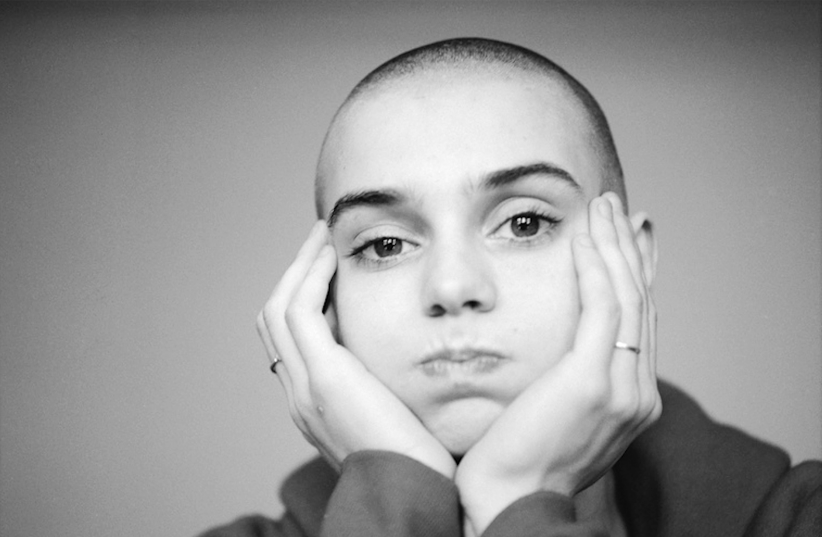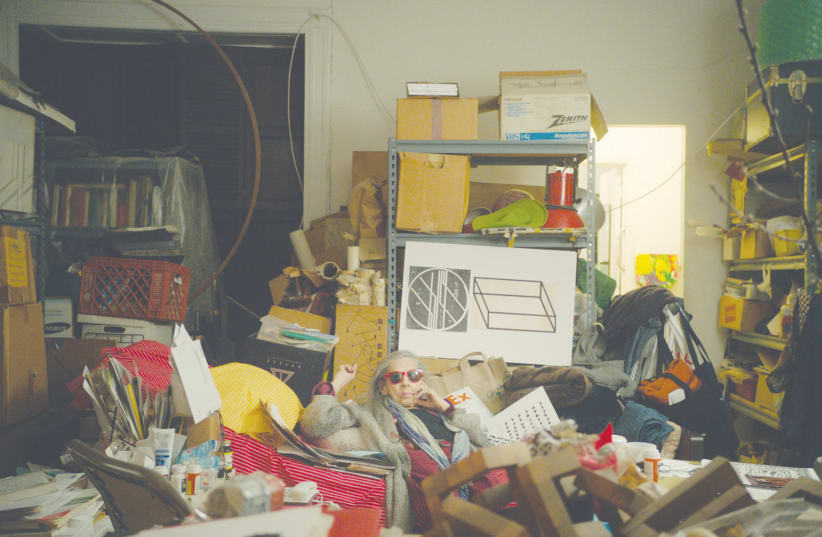This year’s Docaviv Festival kicks off on Thursday with the usual dizzying spread of material, topics, styles and subgenres on offer across the 11-day program, through to June 5.
Music has been a mainstay of the programming avenue of thought since the event’s inception back in 1998. The artistic director in question has always managed to come up with works that promise intriguing, compelling and heartwarming viewing and this year’s lineup, crafted by Karin Rywkind Segal, follows suit.
The even-dozen items in the category span a vast breadth of styles, eras, modes and genres, with storylines aplenty that enable us to get up closer to the protagonists, and get a better handle on their work and what made them tick.
That is front and center in Dreaming Walls: Inside the Chelsea Hotel, which screens on May 29, May 31 and June 4. This is an arts-based film, rather than a musically-leaning one per se, but the ghosts of the likes of Leonard Cohen, Janis Joplin and Jim Morrison, to mention but a few, resonate from the famed New York building, as do the specters of a whole host of notable figures from all manner of artistic endeavor.
As a then youthful singer-songwriter and poet Patti Smith insouciantly notes at the beginning of the film – presumably shot sometime in the seventies – this is where iconic Welsh poet Dylan Thomas stayed when he was in town and, presumably, waged some of his emotional battles. Fact backs Smith up on that one. Thomas was holed up at the hotel in November 1953 when he became seriously ill, dying of pneumonia just a few days later.


The Chelsea, as it is affectionately known, was a haven for a plethora of counterculture artists of various stripes and as some of the characters in the documentary claim, the vibes of the residents-past still filter through the magnificent edifice’s structure.
The Chelsea through the ages
The establishment’s history is colored and scented by the musicians who resided there for various stretches over the years. The roll call includes stellar jazzmen Chet Baker and Chick Corea, rockers Iggy Pop and Jimi Hendrix, preeminent singer-songwriter Joni Mitchell, enfant terrible punk rocker Sid Vicious and Madonna. Leonard Cohen immortalized the place in his song “Chelsea Hotel #2,” which chronicled the artist zeitgeist of the late sixties and, somewhat infamously, his fling with Janis Joplin.
That is impressive, even without noting movie industry titan Stanley Kubrik, Elliott Gould and Dennis Hopper, and visual art greats, such as Larry Rivers, now 92 year old painter and sculptor Jasper Johns and photographer Robert Mapplethorpe who, incidentally, in the early seventies shared an apartment at the hotel with Patti Smith. Mapplethorpe is also associated with the coterie that surrounded pop art icon Andy Warhol, several of whose members resided at the Chelsea.
We catch the building at the intersection between its glorious and magnificently notorious past and its irreversible gentrification. We are let in on the hopes, pain, enduring aspirations and, unavoidably, gripes of the assemblage of folk still living there. And all this while hard hatted workmen climb up and down scaffolding, wielding power drills, trowels and sledgehammers, as the largely ageing locals negotiate their walker frame-assisted way betwixt the nylon sheeting and renovation detritus.
SOME LIVE in bona fide grandeur, with a grand piano in the living room, and fixtures and fittings to die for. Others live in far more modest circumstances, as their life teeters on the edge of its terrestrial denouement.
This is as intimate as documentaries come. The residents, ostensibly oblivious of the impending Armageddon, seem to be intent on carrying on as usual or possibly living life to the fullest as the oxymoronic plot wends its way out. As one inhabitant notes: “For a long while, I felt I was witnessing a slow motion rape of the building, something like a rape, which is upsetting. Then, I decided I’m not watching it anymore. I’m not participating.”
Sinéad O’Connor certainly wasn’t participating in the media witch hunt that surrounded her through the 1980s. Then again, the skinhead Irish pop star wasn’t exactly backing off either.
For anyone who followed the pop scene of the day, Nothing Compares, which gets four screenings at the festival (May 27 and 28, and June 1 and 4), is a helluva eye opener. Most of us, while digging O’Connor’s work, particularly the hauntingly delivered eponymous hit, got the idea that the singer was more than a little psychologically unstable. We never bothered digging into that, questioning if that might be true or, if it was, why that might be the case.
But the now 55 year old singer-songwriter we see – actually we only hear her talk – in the documentary comes across as an intelligent, considered and emotionally robust individual. It was also a surprise to catch the archival footage of interviews she gave back then, in which she responds to provocative if not downright obnoxious questions with dignity and fortitude.
Tellingly, we are also told that O’Connor refused to allow filmmaker Kathryn Ferguson to play her biggest hit. Clearly, the Irish artist was keen for the viewers to relate to her as she is today, too, and not just wallow in a nostalgia trip.
There are plenty of challenging slots in the film, as O’Connor courageously unloads some of the abuse she was exposed to, both within her own family, and by government-sanctioned and ecclesiastical institutions. She comes across as an uncompromising truth seeker and a fearless unwitting trailblazer.
We come right back into the steamy heart of the counterculture domain with Songs for Drella, a minimalistic homage to Andy Warhol lovingly delivered in 1989 by Lou Reed and John Cale. The two gents were members of the groundbreaking Velvet Underground art rock band which became a fixture of Warhol’s inner circle.
In contrast with the feral, unfettered sixties, Songs for Drella finds Reed and Cale in crisp monochromic mode, serving a telling aesthetic counterpoint to the plaintively proffered highly personal ode to the iconic artist and muse.
Elsewhere on the Docaviv musical rollout there is an entertaining portrait of British funk, soul, groove and jazzy-oriented group Cymande, who find far greater success in the United States. Modern jazz pioneer Thelonious Monk is also in the musical documentary mix, as are contemporary classical and electronic music pioneer Karlheinz Stockhausen, Cape Verdean singer-songwriter Cesaria Evora – a.k.a. the Barefoot Diva – and Australian singer-songwriter Courtney Barnett. We also get a little look see at some of our own envelope-pushing music scenes in Kiryat Malachi.
For tickets and more information, visit: www.docaviv.co.il/2022-en
